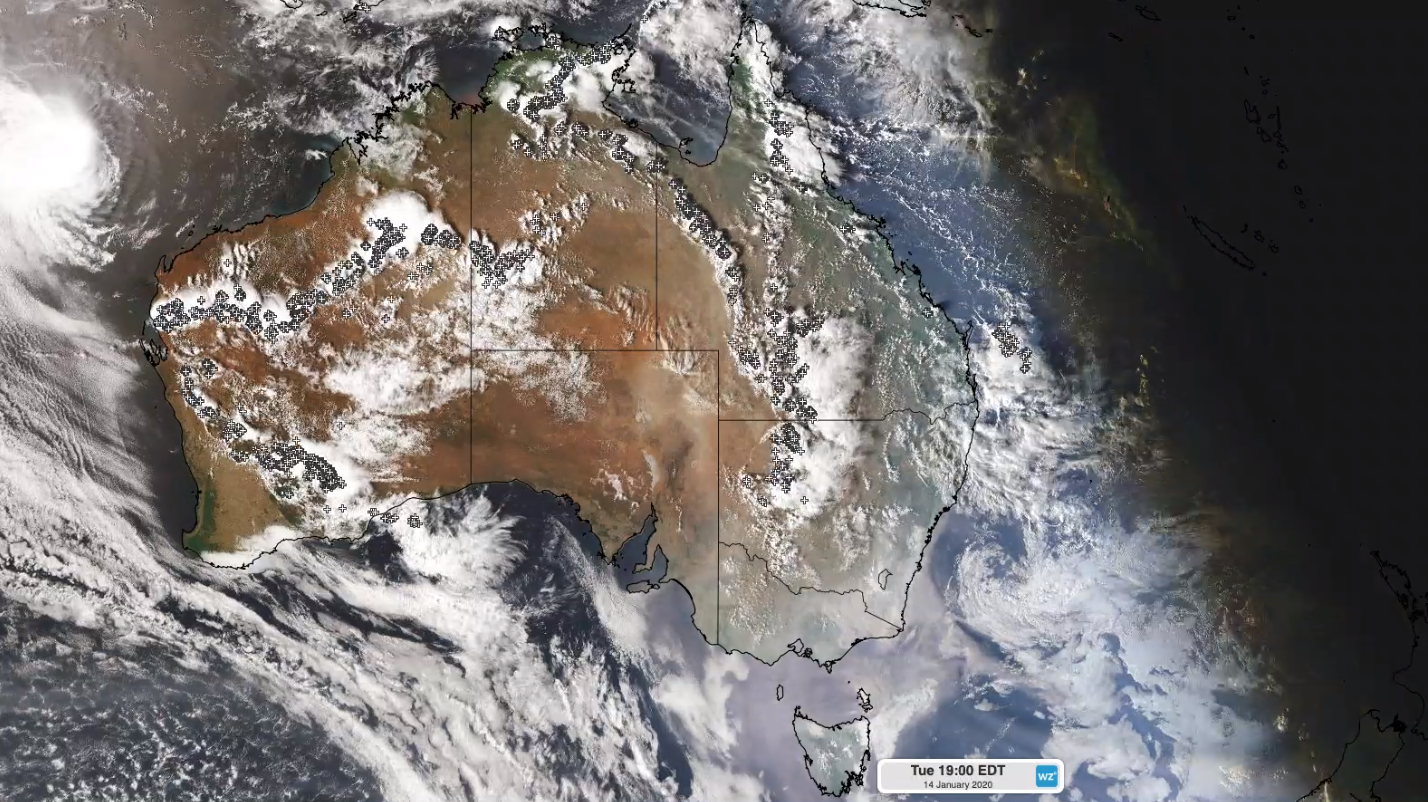Storm clouds build over eastern Australia

The best rain in two months has fallen over parts of Australia's eastern inland as a multi-day outbreak of showers and thunderstorms gets underway.
Storms started to form over western districts of NSW and Queensland on Tuesday afternoon along a broad trough of low pressure. By sunset, thunderstorms were stretching more than 2,000 kilometres across the Australian outback from southwest NSW to Queensland's Gulf Country.

Image: Thunderstorms stretching across Australia's eastern inland shorty before sunset on Tuesday.
Some of the storms rumbled throughout Tuesday night and by Wednesday morning, a few places had picked up their best rain in a couple of months.
During the 24 hours to 9am on Wednesday, Wanaaring (36mm), Wilcannia (17mm), Bourke (12mm) and Charleville (2mm) all received their heaviest rain since early November.
Tuesday's storms were the beginning of a multi-day episode of showers and thunderstorms that will affect Australia's eastern states.
Showers and thunderstorms will become more widespread and intense over Queensland, NSW and Victoria during the second half of this week as the trough lingers over eastern Australia. Most forecast models suggest that this activity will continue into the start of next week as well.
Widespread falls of 20-40mm are likely in Victoria, NSW and Queensland between today and next Wednesday. Some places will see 50-100mm and a few locations should see more than 100mm.
This rain will help ease the drought in parts of all three states, but it won't be enough to break it. The wet weather will also help extinguish some of the fires burning in NSW and Victoria. Unfortunately, any heavy rain over areas recently affected by fires brings a risk of flash flooding and landslides.
Be sure to keep up to date with the latest severe thunderstorm warnings during the next week if you live in eastern Australia.